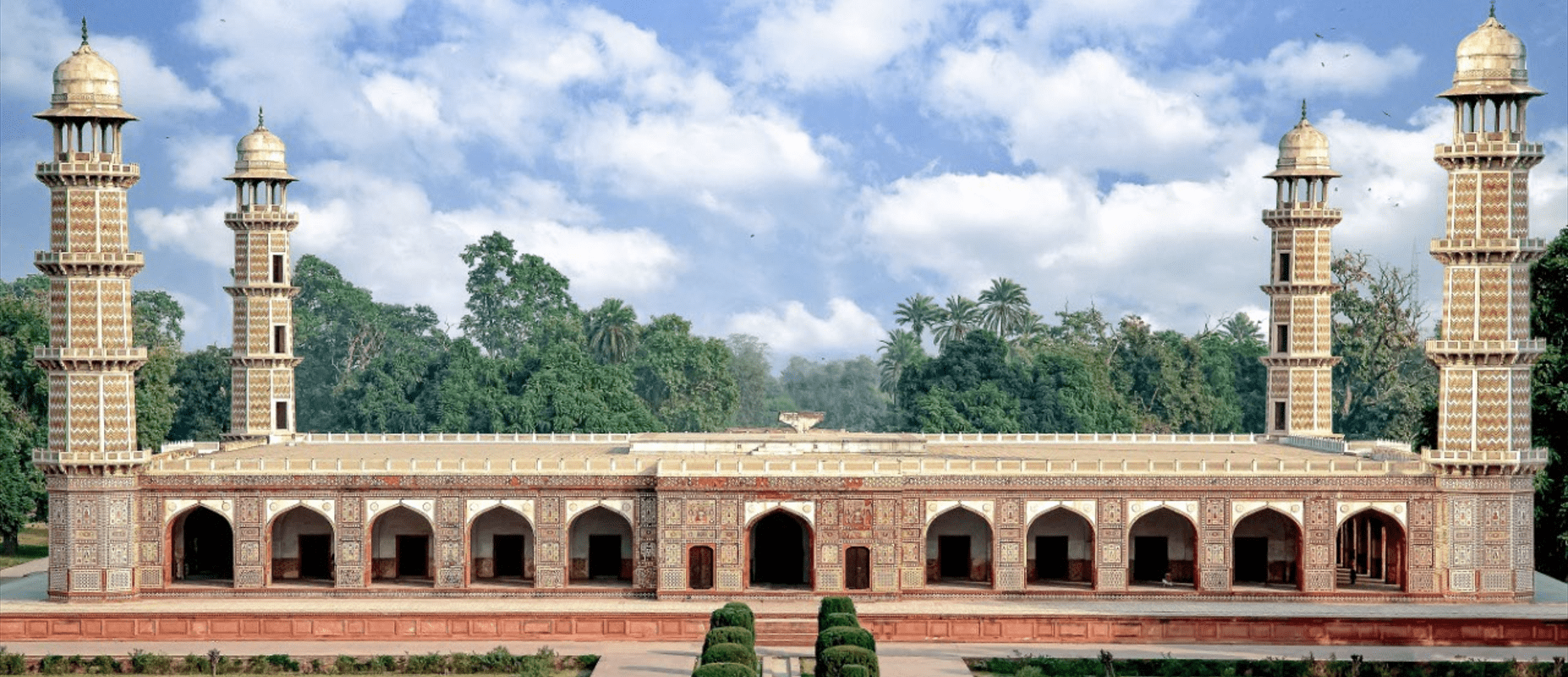
Jahangir’s Tomb
The Tomb of Jahangir is a 17th-century mausoleum built for the Mughal Emperor Jahangir. The mausoleum dates from 1637, and is located in Shahdara Bagh near city of Lahore, Pakistan, along the banks of the Ravi River. The site is famous for its interiors that are extensively embellished with frescoes and marble, and its exterior that is richly decorated with pietra dura. The tomb, along with the adjacent Akbari Sarai and the Tomb of Asif Khan, are part of an ensemble currently on the tentative list for UNESCO World Heritage status.
The tomb is located in Shahdara Bagh, northwest of the Walled City of Lahore. The tomb is located across the River Ravi from Lahore, in what was a rural area known for its numerous pleasure gardens. The tomb is located in Jahangir’s pleasure garden, the Dilkusha Garden, which had been laid out in 1557. The Tomb of Asif Khan, built-in 1645, and the Akbari Sarai, built-in 1637, are located immediately west of Jahangir’s tomb complex, and the three form an ensemble oriented on an east-west axis. The last of the Shahdara Bagh monuments, the tomb of Jahangir’s wife Nur Jahan is located slightly southwest of Asif Khan’s tomb.
The tomb was built for Emperor Jahangir, who ruled the Mughal Empire from 1605 to 1627 C.E. The emperor died in the foothills of Kashmir near the town of Rajauri on 28 October 1627. A funeral procession transferred his body from Kashmir and arrived in Lahore on Friday, 12 November 1627. The Dilkusha Garden in which he was buried was a “favorite spot” of Jahangir when he lived in Lahore. His son, the new Mughal Emperor Shah Jahan, ordered that a “mausoleum befitting an Emperor” should be built in his father’s honor to inter his remains.
Though contemporary historians attribute the construction of the tomb to Jahangir’s son Shah Jahan. Construction started in 1627, requiring ten years for completion, and cost Rs 10 Lakh. Repair works were undertaken at the tomb in 1814 according to Sikh court records. The tomb complex, however, was also desecrated under Sikh rule when they were pillaged by the army of Ranjit Singh, with building materials used for decoration of the Golden Temple in Amritsar. The pillaged grounds were then converted for use as a private residence for an officer in the army of Ranjit Singh, Señor Oms, who was also known as Musa Sahib. Ranjit Singh further desecrated the mausoleum once more when he ordered that Musa Sahib be buried on the tomb’s grounds after dying from cholera in 1828. By 1880, a rumor had begun circulating which alleged that the tomb once was topped by a dome or second storey that was stolen by Ranjit Singh’s army, though no evidence has been found to suggest that a dome or second story ever existed at the tomb.
The Shahdara ensemble of monuments suffered further under British rule, when a railway line was built between the tombs of Asif Khan and Nur Jahan. The site was then repaired by the British between 1889 and 1890.
Flooding from the nearby River Ravi threatened or damaged the site in 1867, 1947, 1950, 1954, 1955, 1957, 1958, 1959, 1962, 1966, 1973, 1976, 1988, and 2010. The site sustained water damage during flooding in 1988 that covered much of the site in 10 feet of water for 5 days.

